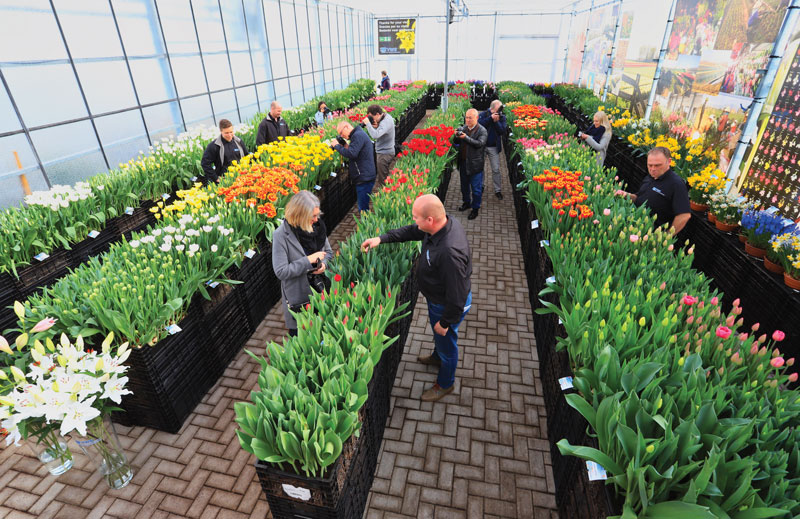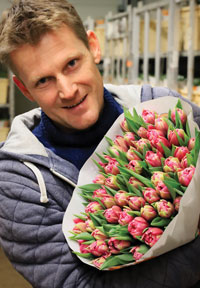4/1/2018
Tulip Mania 2.0
Chris Beytes

Journalists from nine different countries get up close and educated about tulips (and several other bulb genera) with the staff of VWS, an importer and exporter of flower bulbs from Broek op Langedijk, the Netherlands. VWS was one of 11 bulb companies participating in the third annual “Tulip Trade Event,” March 14-16. The journalists—from Poland, Czech Republic, Sweden, Russia, Japan, Norway, China, Finland and the U.S. (represented by yours truly)—were invited to cover the three-day event by iBulb, the organizer.
Tulip Trade Event is much like the California Spring Trials, except it’s primarily tulips. It’s modeled after Dutch Lily Days, with takes place in June (their fifth annual event takes place June 5-8). Participating growers open their doors to customers for displays of existing and new varieties, tours and lunch/beverages. Expected audience is 200 to 300, although participants we talked to hope for 500.
The vast majority of the tulips we saw were intended for forcing for cut flowers rather than potted or garden use. Trials had from 200 to 400 varieties, many of which are quite old … in large part because it takes 20 years to bring a new variety to market. (For instance, Strong Gold, the country’s best-selling cut tulip, originated in the 1960s. It commands about 2,400 acres of the country’s 30,000 acres of bulb
production.)
A big push is to reduce that time dramatically. The breeder, Hobaho, owned by Dümmen Orange, is working with a coalition of universities and other partners, including the biotech company Genetwister Technologies, which we were told is in the process of sequencing the tulip gene. That will help speed up traditional breeding efforts by bringing in genetic markers to identify desirable traits much more quickly than before (it takes five years before a new tulip has its first bloom).
 We also learned there’s a big difference between hydroponic (“water”) culture of cut tulips and traditional soil culture. The former is fast and efficient, which is necessary for high-volume production for the mass market. The latter will produce more of a florist-quality tulip, however.
We also learned there’s a big difference between hydroponic (“water”) culture of cut tulips and traditional soil culture. The former is fast and efficient, which is necessary for high-volume production for the mass market. The latter will produce more of a florist-quality tulip, however.
Grower Aron Mooij (inset), third-generation owner of Mooij Tulips, grows only premium flowers using traditional methods (albeit in a brand new, high-tech greenhouse) because “I’m tulip-crazy,” he says. “I like a good bunch of flowers.”
Plus, he can get 18 cents per stem at the auction when other growers are getting 12 cents for the same variety. GT